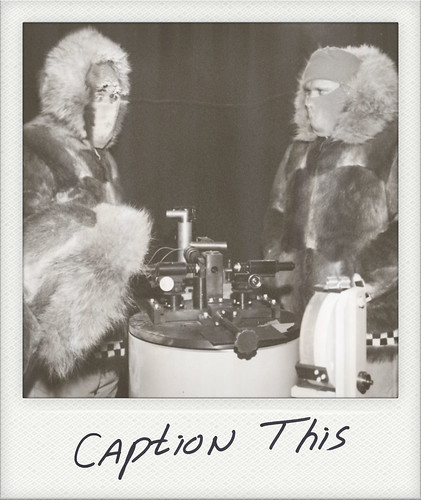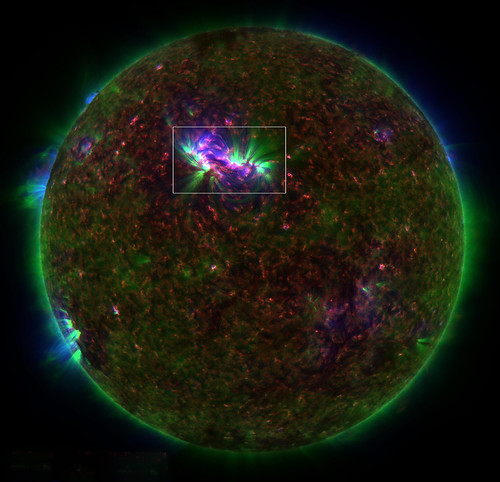Awesomeness Round-up – 8/16/2011
- By Faith Tucker
- August 16, 2011
- 1 Comment
The Goddard Astrobiology Analytical Laboratory released some exciting news about the age-old question of origin of the chemical components necessary for life. According to Dr. Michael Callahan of Goddard, “People have been discovering components of DNA in meteorites since the 1960’s, but researchers were unsure whether they were really created in space or if instead they came from contamination by terrestrial life. For the first time, we have three lines of evidence that together give us confidence these DNA building blocks actually were created in space.” The findings imply that some asteroids and comets may have the chemistry necessary to make the building blocks of essential biological molecules.
This week’s “Caption This” doesn’t actually look too bad considering the recent heat waves…

Winning caption: “Bugger, he’s wearing the same outfit as me. Should’ve worn the little black dress.” (mandylina, via Instagram)
Image credit: NASA Goddard
Don’t forget to check out this week’s “Caption This” and give it your snarkiest caption!
What would you think if you looked out the window of the plane as you flew 30,000 feet above the ground and saw seaweed swaying to and fro around you? Well, according to a recent SDO press release this is a little like what is happening on the surface of the Sun, except instead of impossibly tall vegetation swaying in an equally impossibly high ocean tide there are energetic jets (known as spicules) swaying in the ripples of the Sun’s magnetic field (known as Alven waves). These spicules may just be responsible for both the intense heating of the Sun’s outer most layer and the Solar Wind streaming toward the Earth.

Energetic spicules on the Sun captured by SDO, credit: NASA/SDO/AIA
Ever wonder how a NASA spacecraft gets from a back-of-an-envelope sketch to traveling hundreds, thousands or millions of miles above the Earth? Check out the new Goddard Virtual Tour to get an inside look at the science, people and processes that transform ideas into technology into scientific results.
NASA’s Wide-field Infrared Survey Explorer (WISE) team discovered Earth’s first confirmed Trojan companion. No, it’s not a malicious decoy gift intended to vanquish our unsuspecting planet. Trojan asteroids are small bodies that share an orbit with a planet or moon, residing in one of the Langrange Points. We’ve long suspected that the Earth might have a Trojan of its own, but they’re tricky to spot because their orbit causes them to remain in the part of the sky that’s only up during the day.

An artist’s conception of the orbits of the Earth and the Trojan asteroid
Image credit: Paul Wiegert, University of Western Ontario, Canada
Test your scientific know-how with this Name That Scientist! Quiz from The New York Times.
Did you miss the final Space Shuttle mission this July or need a little refresher on the lifetime of achievements of the Shuttle program? Take 8 minutes to look back over each and every one of the shuttles’ 135 missions.


![SDO Spots Extra Energy in the Sun's Corona [detail]](http://farm7.static.flickr.com/6142/5982663676_5db62cca35.jpg)

Solar spicules are regions of intense energy and are generally associated with intense electromagnetic the radiation. At any given time, about there are around 60k plus spicules which might be present on the sun. These high energy regions pack a big punch.
By the way, these pictures are stunning!